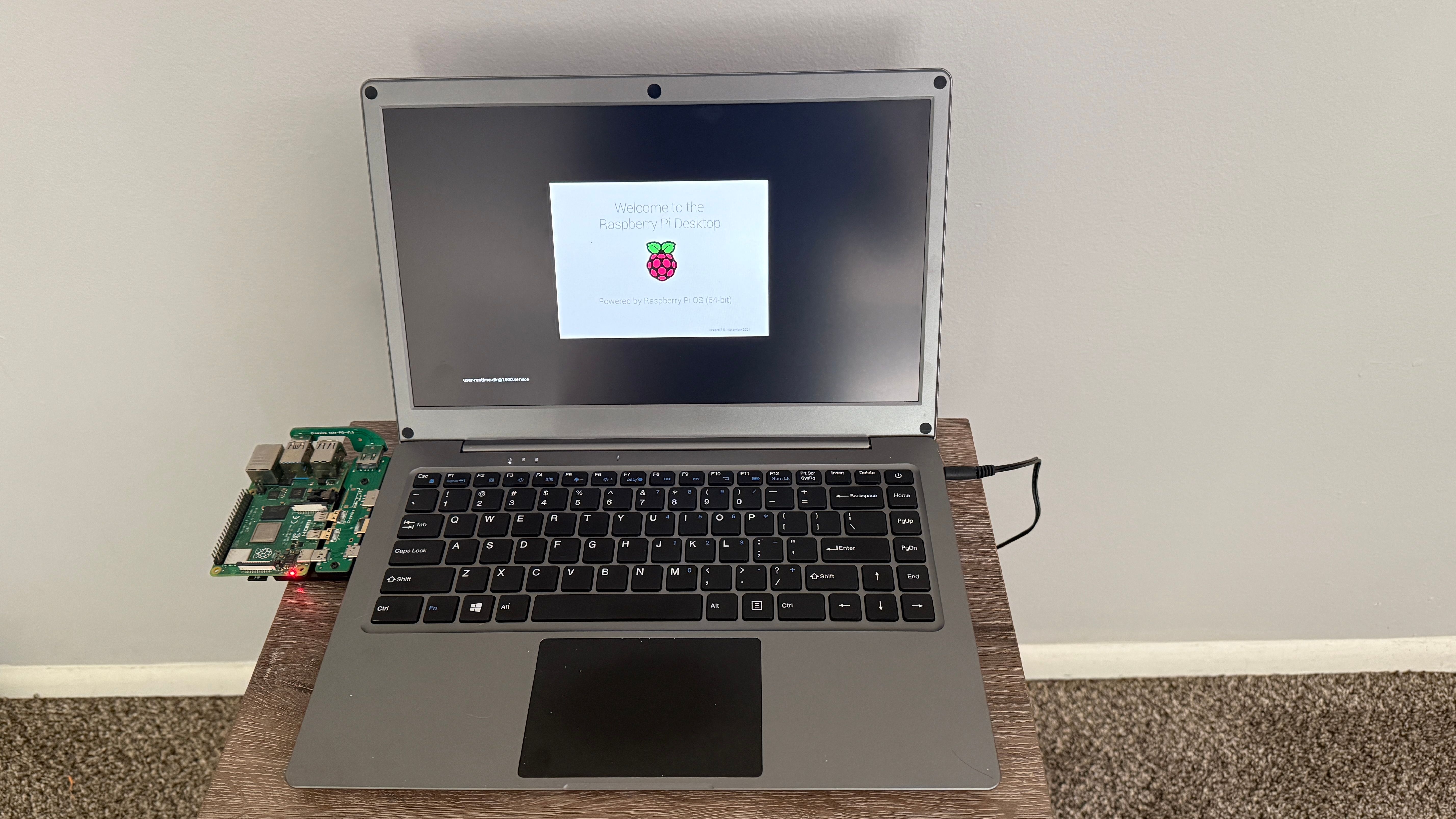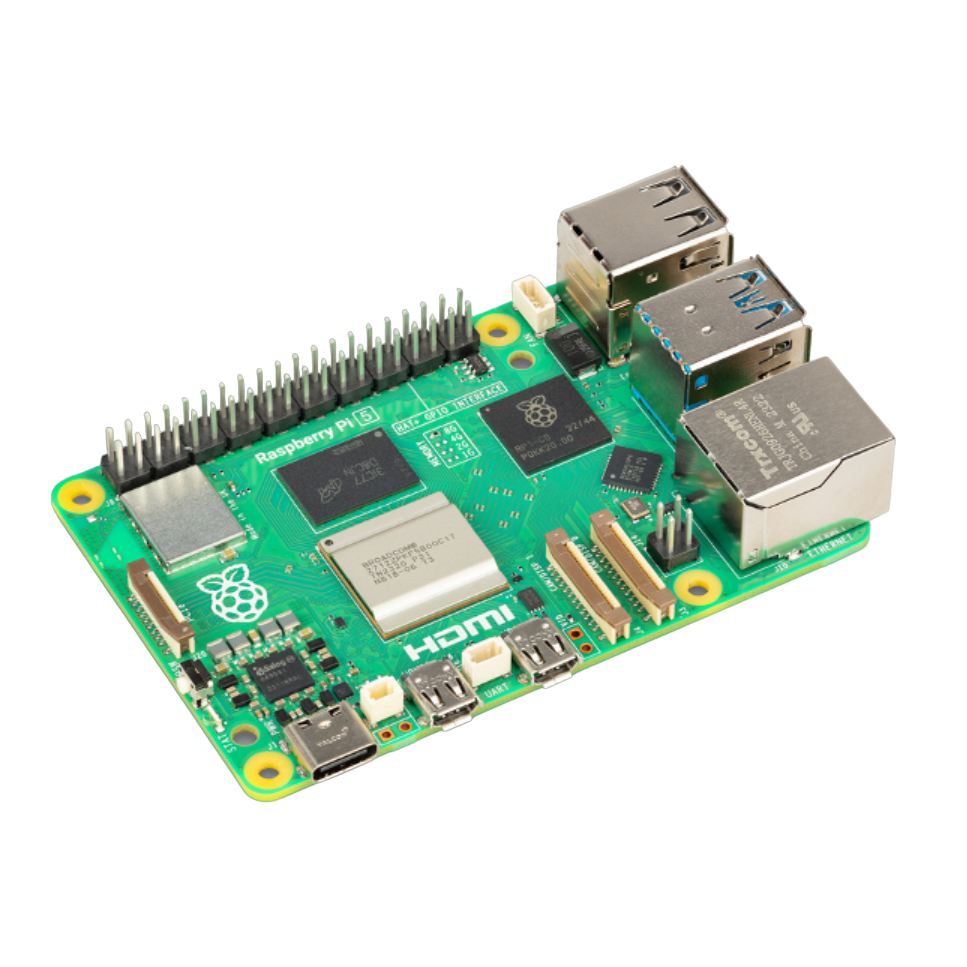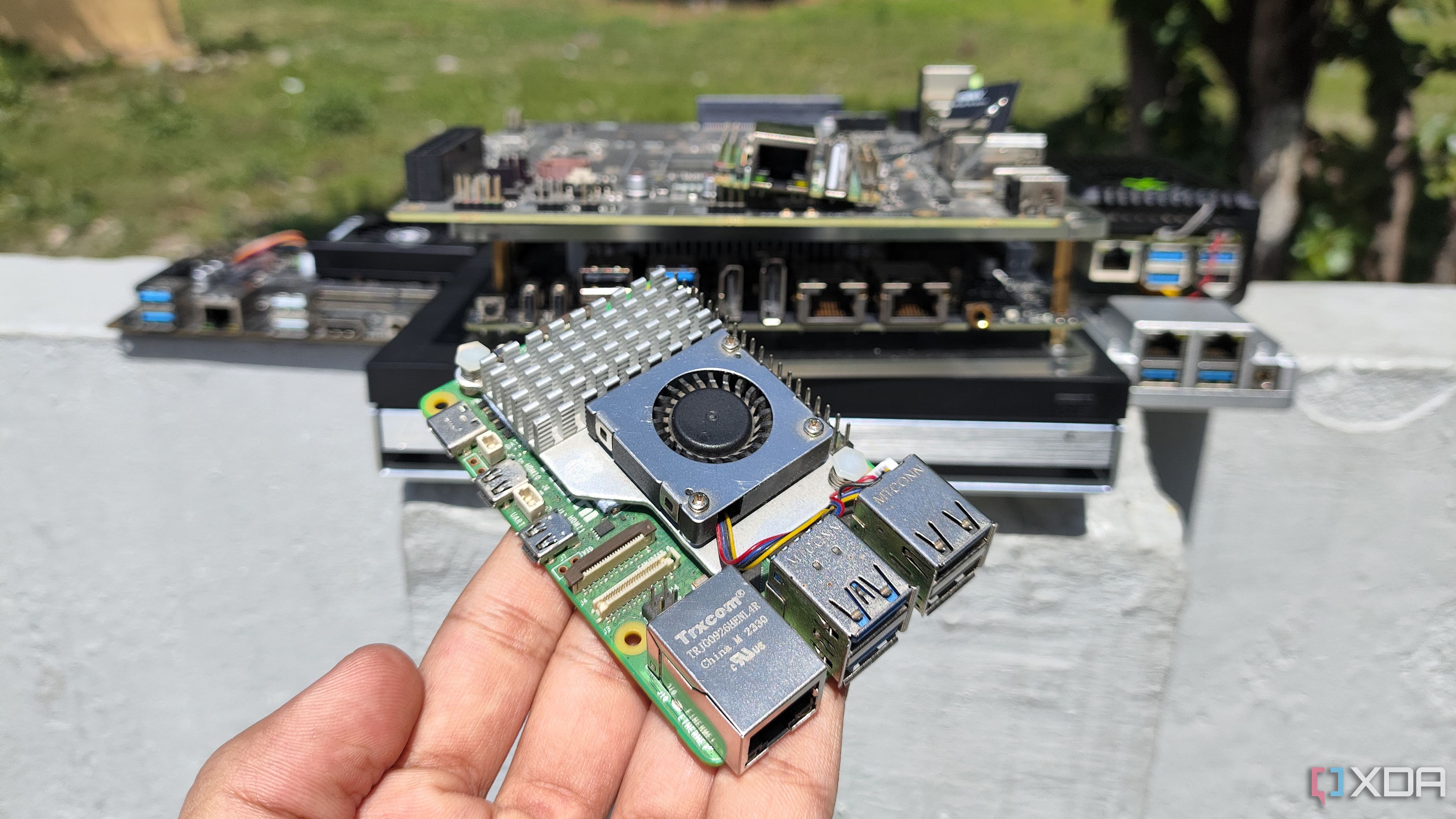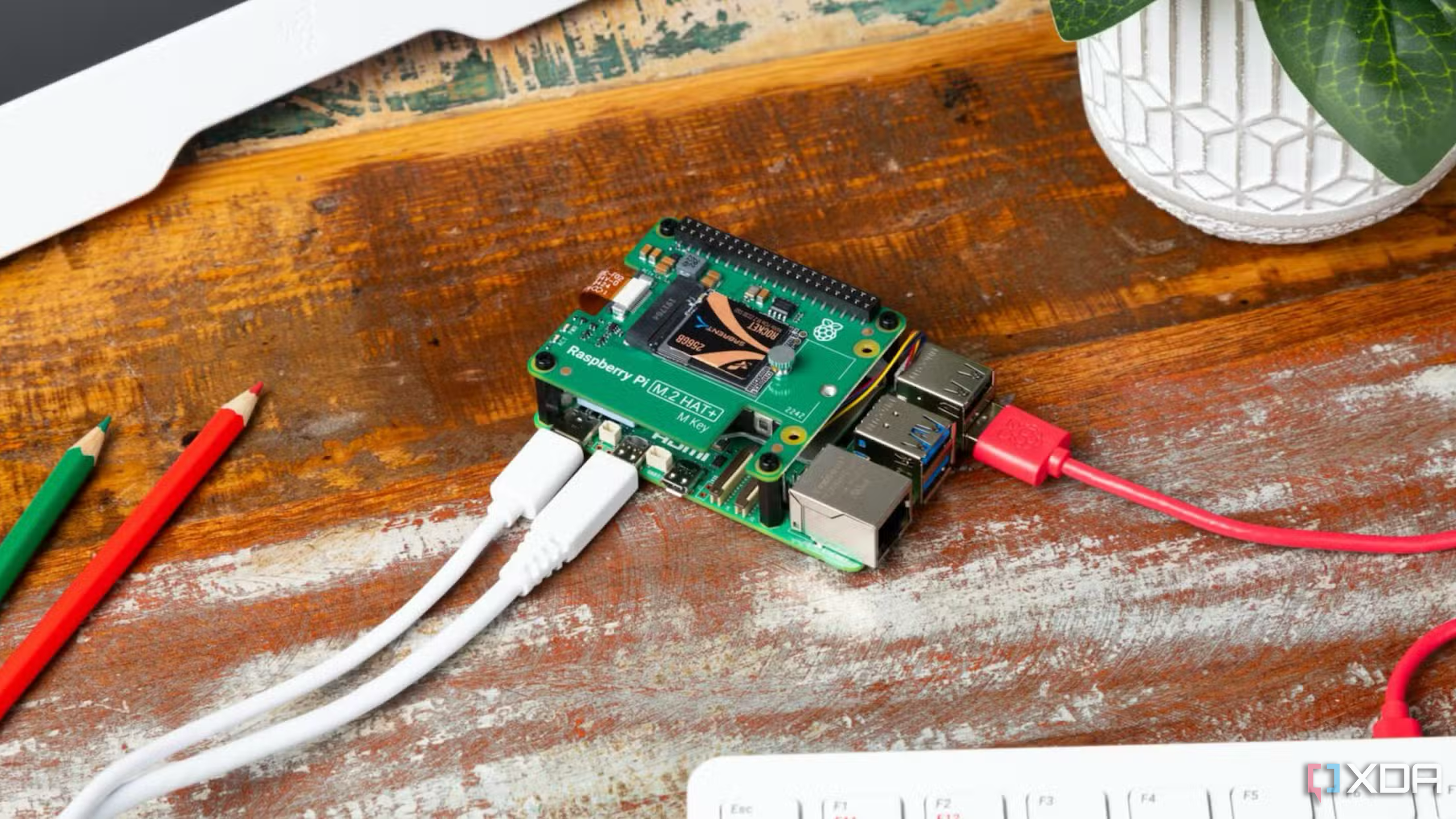Summary
- Manage expectations: Raspberry Pi 1 Model B+ can still run basic headless services.
- Work within limits: Utilize lightweight tools for GPIO projects or serial tasks.
- Not for everyone: Avoid heavy workloads or GUI tasks - upgrade if needed.
When the Raspberry Pi 1 Model B+ launched back in 2012, it sparked a wave of excitement in the DIY and education communities. The 2014 revision brought a modest bump to the SoC and USB ports, but it's still a far cry from today’s Raspberry Pi 4 or Pi 5. So why did I pull one out of storage in 2025 and try to use it again? Mostly curiosity, partly nostalgia. I assumed it would be slow, frustrating, and borderline unusable, but I was surprised at how far a little patience and the right expectations could take it.
Basic expectations were quickly reshaped
Even limited hardware can still do useful work
I didn’t expect much from a single-core 700 MHz CPU and 512MB of RAM. Honestly, it felt unfair even to compare it to modern boards. Booting into Raspberry Pi OS (Legacy) took longer than I’m used to, and applications like Chromium were basically unusable unless you were extremely patient. That said, I wasn’t aiming to make it my daily driver. I was testing whether this old board could still find a place in a self-hosted stack or some other practical project.
Once I dropped my expectations from “Can it run a desktop?” to “Can it run a simple headless service?”, everything changed
Once I dropped my expectations from “Can it run a desktop?” to “Can it run a simple headless service?”, everything changed. Running Pi-hole was entirely reasonable, and the CPU load remained light, even with multiple devices connected to my network. I also tested out Lighttpd with a simple static webpage and was surprised by how snappy it felt once it was fully set up. It reminded me that for many single-purpose roles, even outdated hardware can keep pulling its weight.
Memory management was still a limiting factor, of course. The system would start to lag if I opened too many processes, and swap usage got ugly fast. However, if I stayed in the terminal and stuck to purpose-built scripts or tools, the Model B+ performed surprisingly well. It’s not something I’d recommend to beginners today, but it could still be helpful in the right hands.
Some use cases still shine today
Headless utilities and serial projects thrive here
After trying out Pi-hole, I explored other use cases where horsepower isn’t the primary concern. One of the most useful was setting up a basic MQTT broker using Mosquitto. The installation was straightforward, the service ran smoothly, and it handled test traffic from Home Assistant without any issues. It’s hard to justify tossing a Pi just because it’s old when it can run a network protocol stack so reliably.
Next, I tried a more niche application, connecting to a serial device over USB and relaying that data to a more modern Pi over SSH. This type of task is ideal for a Raspberry Pi Model B+. It doesn’t need graphics, hardly touches the CPU, and can stay powered 24/7 without generating any noticeable heat. It’s also the kind of project where you don’t care if the SD card fails eventually, since everything critical is handled upstream.
I also experimented with a few GPIO-driven tasks, such as toggling relays and blinking LEDs, using Python. The response time wasn’t lightning fast, but for physical computing experiments or sensor-based logging, it was more than enough. With the right kernel modules and a trimmed-down OS image, I can see myself keeping this setup running as part of a larger automation chain.
The downsides are obvious, but manageable
Performance limits, USB headaches, and thermal quirks
Let’s be real: this board is ancient by today’s standards. Modern websites can grind to a halt, USB throughput is poor, and even updating packages takes longer than it should. But none of this was unexpected. The surprise was that, despite these shortcomings, the Pi 1 Model B+ didn’t completely collapse under modern workloads, just some of them.
The Raspberry Pi 1 Model B+ still has life left in it, but you have to manage your expectations and use it for lightweight, headless tasks
One challenge I hadn’t anticipated was just how much slower USB 2.0 feels now. File transfers from a flash drive were slow, and my USB-to-Ethernet adapter didn’t always work correctly. When I connected a powered USB hub, some of the flakiness disappeared, but the experience reminded me how much better later revisions are for handling peripherals. If you’re planning to rely on USB-connected devices, this isn’t the board for you.
The heat situation was more of a curiosity than a concern. Without active cooling, the board did warm up under load, but not to a dangerously high temperature. Still, it lacked any built-in thermal regulation features. It’s a good reminder that you can’t just throw modern software or multitasking at these boards and expect them to thrive. You must design your workloads carefully and keep them manageable to ensure optimal performance.
Not every legacy Pi is worth saving
Sometimes it’s better just to upgrade
I wouldn’t use this thing for any kind of graphical interface or desktop replacement. Even LXDE on the Legacy OS felt slow and unresponsive. Multimedia? Forget it. Video playback stuttered even with local files, and streaming was entirely out of the question. If your goal is to do anything involving a modern web browser or GUI apps, you’re better off buying a Pi 4B or Pi 5.
The limited RAM is a killer when you’re working with heavier services. I tried running Node-RED for fun, and it crashed twice before I got it working with a very lightweight flow. Even then, it felt sluggish. Some services may be able to run on this device, but they’ll be much happier on something newer. You must tailor your projects to the hardware’s limitations.
Another issue is support. While Raspberry Pi OS Legacy is still available, there is no guarantee it’ll remain available forever. The Raspberry Pi Foundation warrants the model will remain in production until 2030, but many newer Linux distributions no longer support ARMv6. This means the number of software choices will shrink over time. If you want long-term stability, an upgrade is the more sustainable route. It’s also the path I’d recommend for most people starting today.
Still surprisingly capable in the right hands
The Raspberry Pi 1 Model B+ can still be useful

Even though it’s more than a decade old, the Raspberry Pi Model B+ still has a place in today’s DIY world, just not the same one it once held. It can’t run heavy workloads, it’s not suitable for media, and it certainly isn’t snappy. However, if you match your expectations to what it can actually do, it’s surprisingly reliable.
For me, this was more than just a nostalgia trip. I discovered several practical applications for a board I had previously written off, and I was genuinely impressed with its resilience. With lightweight tools, careful project choices, and zero reliance on graphical interfaces, the Model B+ proves it's not entirely obsolete. It just needs the right job to do.

Raspberry Pi 5
CPU Arm Cortex-A76 (quad-core, 2.4GHz)
Memory Up to 8GB LPDDR4X SDRAM
Operating System Raspberry Pi OS (official)
Ports 2× USB 3.0, 2× USB 2.0, Ethernet, 2x micro HDMI, 2× 4-lane MIPI transceivers, PCIe Gen 2.0 interface, USB-C, 40-pin GPIO header
GPU VideoCore VII
Starting Price $60
Wireless Connectivity Bluetooth 5.0, Dual-band 802.11ac Wi-Fi
.png)













 English (US) ·
English (US) ·